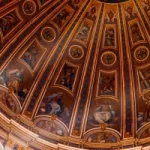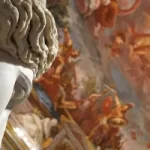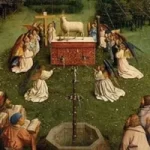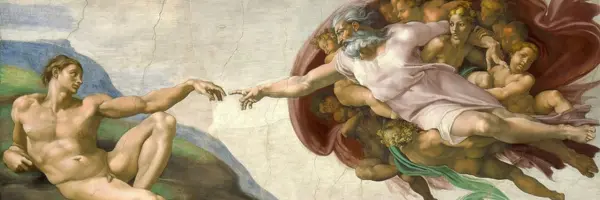
Renaissance art is a captivating subject. People often wonder what truly defines this influential period.
Renaissance art marked a significant shift in European culture and history. It characterized a revival of classical learning and an individualistic view of man. This era saw remarkable painting, sculpture, and architecture advancements, blending innovation with tradition.
The Renaissance saw the integration of art with philosophy, science, and literature, which set the stage for an explosion of creativity. Italy, particularly cities like Florence, was the birthplace of this cultural rebirth. Artists then developed techniques like perspective and chiaroscuro to bring a new level of realism to their work.
The impact of Renaissance art extended beyond Italy. Its themes of humanism and nature influenced practices across Europe. This period produced some of the most iconic artists and works in history, creating a legacy that continues to inspire today’s world.
Renaissance Art: Historical Context
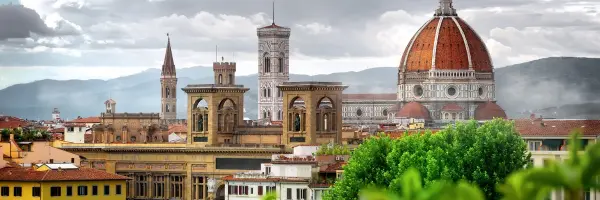
The Renaissance marks a period of great cultural transformation characterized by a revival of interest in classical antiquity. This era influenced art, literature, and science, shaping the evolution of Renaissance paintings and fostering a new artistic vision that continues to inspire.
Origins of the Renaissance
The Renaissance began in Italy in the 14th century and spread across Europe by the 16th century. A renewed interest in the literature and philosophy of ancient Greece and Rome sparked it. The period followed the Middle Ages when Europe had limited access to these texts.
The reopening of trade routes and the fall of Constantinople in 1453 led to an influx of classical texts into Europe, fueling the Renaissance spirit. This revival was centered in cities like Florence, where the flourishing economy supported artistic growth.
The Role of Patronage
Patronage played a crucial role in the creation of Renaissance art. Wealthy families, such as the Medici of Florence, funded artists and intellectuals, allowing them to pursue their work without financial burdens.
These patrons viewed art as a means to display their power and influence. They commissioned grand projects, from cathedrals to sculptures, driving the demand for innovative techniques and ideas.
This support made Renaissance painting prominent and propelled artists into new realms of creativity and expression, leading to some of the most famous Renaissance art.
Influence of Classical Antiquity
The influence of classical antiquity is evident throughout Renaissance-era art. Artists studied ancient Greek and Roman works to master perspective, anatomy, and proportion.
This led to realistic portrayals of human forms and idealized human forms in art during the Renaissance. Architectural elements were also borrowed from classical styles, emphasizing symmetry and harmony.
Renaissance art, for example, often included mythological themes and narratives drawn from ancient literature, which added depth and historical context to artworks. This blend of classical elements with innovative techniques marked a distinct departure from the spiritual themes of medieval art, defining the unique Renaissance art style.
Characteristics of Renaissance Art
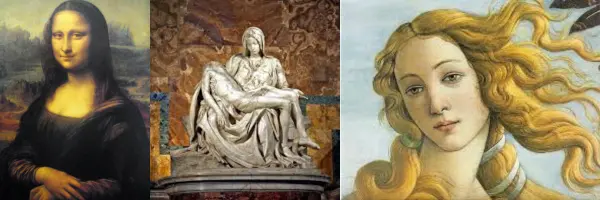
Renaissance art is celebrated for its focus on human experience, realistic representation, and innovative techniques. This era departed from the predominantly religious themes of medieval art, embracing more secular subjects that highlighted the beauty of humanity and the natural world.
The High Renaissance lasted from the late 1490s to 1527 and was a pinnacle of artistic achievement in Italy, particularly in Rome and Florence. This period was characterized by groundbreaking artistic innovation and a fervent quest for knowledge.
Renowned artists such as Leonardo da Vinci, Michelangelo, Raphael, and Bramante emerged and produced some of their most iconic masterpieces.
Humanism
During the Renaissance, art focused more on human experiences and emotions. Inspired by ancient Greek and Roman ideals that valued human achievement and intellect, artists started portraying people with realistic emotions rather than the idealized forms of earlier art.
This change, known as humanism, reflected a broader interest in human potential and the natural world.
Paintings during the Renaissance often depicted scenes from daily life, mythology, and history, showcasing the complex nature of human relationships and accomplishments.
Realism and Expression
Renaissance artists aimed to represent the world more accurately. They used techniques like shading and light to create depth and lifelike qualities.
Renaissance artwork often featured detailed figures with distinct facial expressions and body language. This shift towards realism was a significant departure from the flat, more symbolic art of the Middle Ages.
Famous Renaissance art by artists like Leonardo da Vinci and Michelangelo emphasized this commitment to realistic representation, allowing viewers to connect more deeply with the artwork.
Perspective and Proportion
One revolutionary technique developed during the Renaissance was the linear perspective. This method enabled artists to create the illusion of depth on a flat surface, making scenes appear three-dimensional.
Artists like Filippo Brunelleschi demonstrated how to achieve this effect using vanishing points and horizon lines. Focusing on proportion and anatomy also led to more accurate portrayals of the human body.
Renaissance paintings often used mathematical principles to ensure that figures were balanced and harmonious, highlighting the era’s blend of science and art.
Iconic Artists and Works
Renaissance art flourished due to the skill and innovation of its artists, who were known for their mastery of technique and creativity. The following artists shaped the era with their groundbreaking works.
Leonardo da Vinci
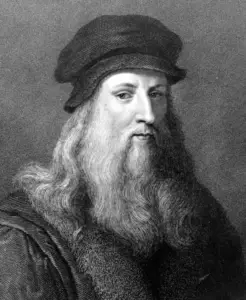
Leonardo da Vinci, a polymath, was a central figure in Renaissance art. He was renowned for his painting techniques, such as sfumato. His work, The Last Supper, captures a dramatic moment in biblical history with remarkable realism and emotional depth.
The Mona Lisa is renowned for its enigmatic expression and intricate background, which showcase Leonardo’s portraiture skills. His drawings and sketches further highlight his mastery of anatomy and engineering, making significant contributions to Renaissance art studies.
Michelangelo Buonarroti
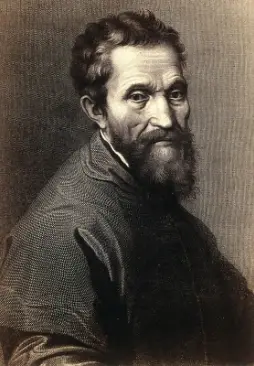
Michelangelo Buonarroti, who was celebrated for his sculptures and paintings, pushed the boundaries of Renaissance art. His work on the Sistine Chapel ceiling in Vatican City includes iconic scenes like The Creation of Adam.
With its dynamic figures and powerful composition, this fresco remains a pinnacle of the High Renaissance art style. Michelangelo also sculpted David and the Pieta, reflecting his unparalleled skill in rendering the human form.
Raphael
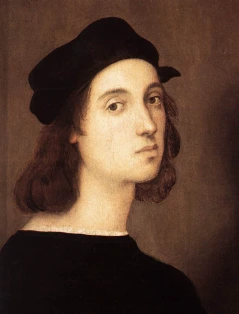
Raphael, known for his harmonious and balanced compositions, left a significant mark on Renaissance painting. His School of Athens is a masterpiece of perspective and harmony.
This fresco, located in the Vatican, features philosophers like Plato and Aristotle, symbolizing the rebirth of classical knowledge. Raphael’s portraits and the Madonna series exemplify his graceful style and intricate detail.
Titian
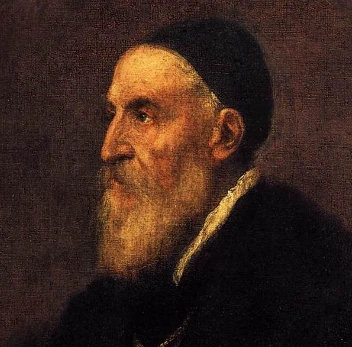
Titian was a leading figure in Venetian Renaissance art. He was known for his vibrant use of color and expressive brushwork. His work, Assumption of the Virgin, displays rich colors and dramatic movement.
Titian’s portraits of influential figures, such as Emperor Charles V, exemplify his ability to capture personality and status, setting a benchmark for future portraiture.
Sandro Botticelli
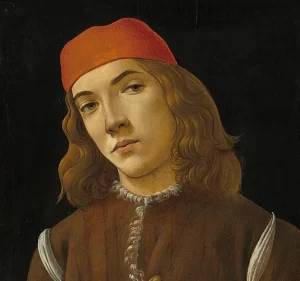
Sandro Botticelli’s paintings are iconic examples of early Renaissance art. His famous work, “The Birth of Venus,” embodies the Renaissance art style with its mythological themes and elegant figures.
Botticelli’s use of line and form creates a sense of beauty and grace that continues to captivate audiences.
Giovanni Bellini
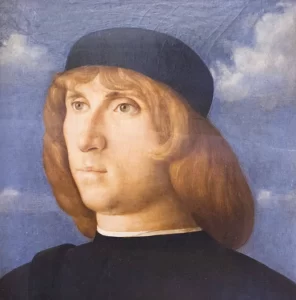
Giovanni Bellini played a key role in defining Venetian Renaissance art. His work, Madonna and Child, illustrates his transition from Byzantine influences to Renaissance ideals.
Bellini’s focus on color and light laid the foundation for Venetian painting, influencing artists like Titian and Giorgione.
Donatello
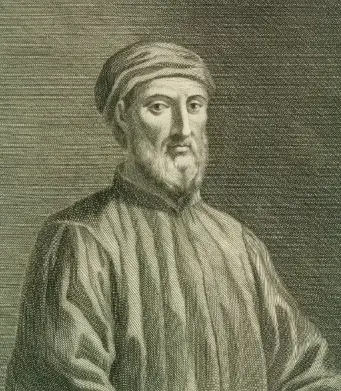
Donatello was a pioneering sculptor of the Italian Renaissance, renowned for introducing lifelike realism and emotional expression into sculpture, most famously seen in his bronze David—the first freestanding nude statue since antiquity.
His innovations in depicting anatomy and human emotion greatly influenced later Renaissance artists, including Leonardo da Vinci, helping to shape the era’s focus on humanism and naturalism.
Fra Angelico
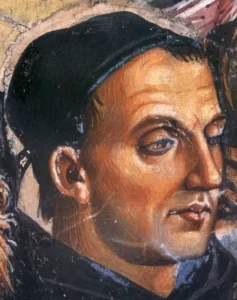
Fra Angelico, a Dominican friar, was integral to developing early Renaissance art. His Annunciation, with its delicate figures and use of light, captures religious devotion with clarity and peace.
Angelico’s frescoes in the San Marco convent are heralded for their spiritual depth and are crucial to understanding Renaissance religious art.
Techniques and Media
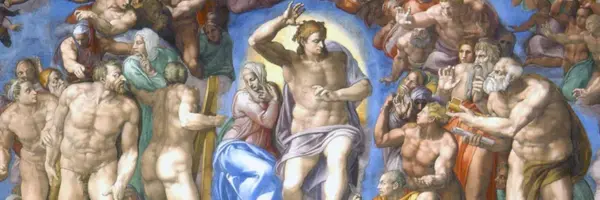
Renaissance art is known for its mastery of various media and techniques, reflecting the cultural rebirth of this era. Artists perfected methods such as fresco and oil painting, and sculpture remained a vital form. Each contributed to the unique qualities of Renaissance artwork.
Fresco Painting
Fresco painting became a defining feature of the Renaissance. Artists applied pigments to wet plaster, bonding the colors with the wall surfaces. This method was widely used to decorate churches and public buildings. Michelangelo’s Sistine Chapel is a celebrated example of this technique.
Frescoes demanded quick execution because artists worked on sections of wet plaster each day, known as “giornate,” which required careful planning. The vibrant and durable colors resulted in long-lasting, monumental masterpieces that captured religious and mythological themes.
This technique highlighted the skill and creativity of Renaissance artists, as seen in Italian Renaissance art.
Oil Painting
Oil painting emerged as a critical technique during the Renaissance, especially in Northern Europe. Renaissance artists like Jan van Eyck popularized oils, allowing greater flexibility and detail. The medium enabled artists to create previously challenging textures and subtle color gradations.
Oil paints also allowed artists to work slowly and efficiently to make changes, leading to intricate and lifelike portraits and landscapes. This method marked a significant evolution in creating artwork during the Renaissance, contributing to some of the era’s most famous paintings, such as those by Leonardo da Vinci.
Sculpture
Sculpture played a central role in Renaissance art, reviving interest in the classical forms of ancient Greece and Rome. Artists like Donatello and Michelangelo transformed marble and bronze into expressive forms that conveyed movement and emotion.
Sculpture allowed for a three-dimensional human anatomy exploration, expressing realism and idealism.
Renaissance sculptures often humanized biblical and mythological subjects, making them relatable. This period shifted from the static, hierarchical medieval styles to more dynamic and naturalistic forms.
Michelangelo’s sculpture “David” remains a monumental achievement of Renaissance art, reflecting its focus on human beauty and physical idealism.
Themes and Subjects
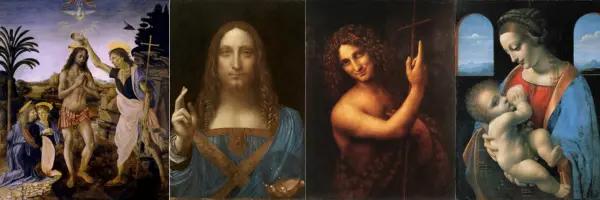
Renaissance art is defined by its diverse themes and subjects reflecting humanism and individuality. Art during the Renaissance often explored religious narratives, mythological tales, and detailed portraiture.
Religious themes were central to Renaissance art. Artists depicted scenes from the Bible, including the Virgin Mary and Christ. Innovative emotions and realism characterized these images.
Masters like Leonardo da Vinci and Michelangelo presented spiritual narratives emphasizing human figures and emotional depth.
Renaissance paintings in churches and cathedrals often highlighted religious scenes, captivating worshippers with a sense of divine realism. Perspective and naturalism helped engage viewers more deeply with the spiritual stories.
Mythological Subjects
Mythological themes became prominent in Renaissance artwork as artists drew inspiration from ancient Greek and Roman stories. This interest in classical mythology was partly a resurgence of classical learning and a desire to explore human experiences through ancient narratives. Botticelli’s “The Birth of Venus” exemplifies this trend, presenting mythological figures with grace and beauty.
Painting during the Renaissance often featured gods and goddesses, emphasizing qualities like love, power, and heroism. These works allowed artists to explore human emotion and the divine, blending reality with fantastical imagery to celebrate human potential and creativity.
Portraiture
Portraiture during the Renaissance marked a shift toward individualism. Artists captured not just the physical likeness but also the personality and status of their subjects.
Portraits showcased realistic details that highlighted individuals’ unique traits and expressions. This focus was part of the movement toward humanism, which celebrated the individual.
Renaissance artists like Raphael and Titian were renowned for their attention to detail and emotional depth in portraits. The art form became a way to immortalize influential figures, offering a glimpse into the lives and identities of people from the Renaissance period.
Renaissance Art Outside Italy
Art during the Renaissance extended far beyond Italy’s borders, influencing and shaping the culture of Europe as a whole.
The interplay of ideas across regions led to diverse artistic expressions, particularly evident in the Northern Renaissance and other influences across the continent.
The Northern Renaissance
The Northern Renaissance marked a distinct shift in European art, particularly in regions like the Netherlands, Germany, and France. Unlike the Italian Renaissance, which focused heavily on classical themes and human anatomy, Northern Renaissance art emphasized detailed realism and vivid landscapes.
Artists such as Jan van Eyck and Albrecht Dürer became famous for their meticulous attention to texture and light.
Northern artists often used oil paints to achieve previously unseen detail. This period led to notable Renaissance paintings, often including complex iconography and religious scenes infused with late Gothic details.
Additionally, the Northern Renaissance art style incorporated everyday life, portraying ordinary people and domestic scenes, which helped expand the subject matter of European art.
Influence Across Europe
Renaissance art also significantly impacted other parts of Europe. In England, the influence can be seen in the works of Hans Holbein the Younger, known for his detailed portraits.
France experienced a blend of its Gothic traditions with Renaissance styles, led by artists like Jean Clouet.
In Spain, the Renaissance emerged as an art movement influenced by Gothic and Islamic influences. Artists like El Greco introduced vibrant colors and emotive expressions into their renowned artworks.
This period also saw the rise of the High Renaissance, which peaked beyond Italy and emphasized grand compositions and balanced proportions.
The cross-regional spread of Renaissance ideas helped transform European art by incorporating local elements and evolving artistic techniques.
Impact and Legacy
Renaissance art significantly influenced the transition to new artistic movements and inspired modern reinterpretations.
These influences are evident in how Renaissance paintings paved the way for the Baroque era and how contemporary artists drew inspiration from this period.
Transition to the Baroque Era
Art during the Renaissance laid the foundation for the Baroque era, which emerged in the 17th century. Baroque artists expanded on the realistic portrayal and dramatic compositions of Renaissance art, introducing intense emotions and dynamic movement into their work.
Artists like Caravaggio were influenced by Renaissance painters’ mastery of light and shadow, which led to the development of chiaroscuro techniques. This shift added depth and drama to artworks, making scenes more vivid.
While Renaissance art focused on proportion and harmony, Baroque art favored bold contrasts and grandeur.
These traits can be seen in the grand palaces and cathedrals of the time, which were enriched by intricate designs borrowed from Renaissance architecture.
Reinterpretation in Modern Art
Modern Renaissance art continues to inspire artists across various styles and mediums. Famous Renaissance art is a benchmark for technique and creativity, with aspects integrated into modern movements like surrealism and realism.
Contemporary artists often reinterpret themes and techniques from the Renaissance art period, incorporating them into new contexts.
For instance, perspective and anatomical correctness are critical for painters and digital artists.
Furthermore, exhibitions and educational programs focusing on Renaissance art history keep the style relevant. These programs help to bridge historical art with present-day practices, ensuring that the legacy of Renaissance paintings persists.
Modern appreciation for Renaissance paintings indicates a continued interest in the period’s artistic achievements and its profound influence on subsequent art forms.
Final Thoughts
Renaissance Art showcases a profound transition in artistic techniques and cultural perceptions. This period emphasized humanism, focusing on human experiences and emotions.
Techniques like perspective and chiaroscuro developed during this time, allowing artists to portray realistic and lifelike figures.
Artists such as Leonardo da Vinci, Michelangelo, and Raphael were central to this movement. Their contributions, such as Michelangelo’s Sistine Chapel fresco, demonstrated the height of artistic achievement in this era.
This focus on realism and attention to detail set Renaissance art apart from earlier medieval styles.
The Renaissance also saw significant innovations in painting, sculpture, and architecture. Some noteworthy characteristics include the revival of classical themes and the fusion of art with science and mathematics.
These changes not only impacted artists of the time but also had a lasting influence on modern art.
Many of these artistic advancements included using new tools and techniques that were unexplored before.
Renaissance artists were known for their bold imagination and significant departures from traditional methods. This daring approach laid the groundwork for future creativity.
A connection to modern ingenuity can be seen in sites like www.leonardodavincisinventions.com, where artists’ brilliance and multifaceted talents like Leonardo da Vinci are celebrated. This embodies the enduring spirit of curiosity and exploration that defined the Renaissance era.
